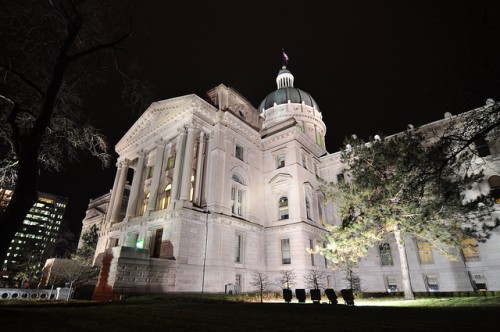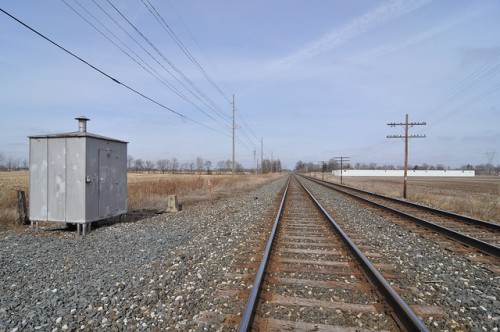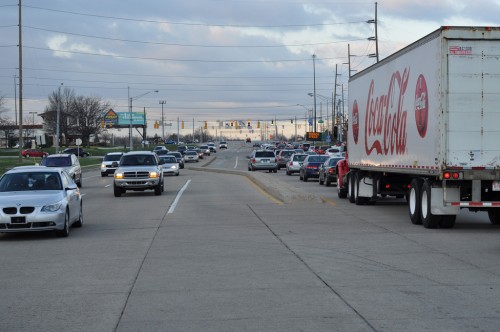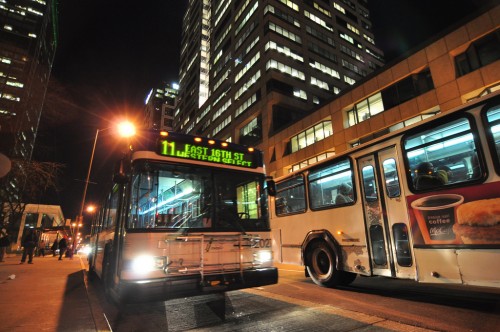Joint Study Committee on Transportation Infrastructure Assessment and Solutions
by Ehren T Bingaman, Executive Director – CIRTA
In 2003 I took a position in legislative affairs and experienced the legislative and law making process in Indianaup close for the first time. I was then and still am now amazed at how accessible the legislative process is in Indiana. Access by this definition is related to effort—showing up for meetings, knowing where to find info about the meetings, and taking the time to figure who is talking, where they are from and who they represent. This is all pretty easy to find by spending a few minutes on the Indiana General Assembly website, www.in.gov/legislative.
Because we have a part-time legislature the interim session is invaluable to the bill writing process and the development of relationships with legislators and representatives of the various interest groups that touch a particular issue. Urban Indy asked me to guest write about one such interim study committee known as the Joint Study Committee on Transportation Infrastructure Assessment and Solutions.

Interim study committees create a venue for information gathering and policy development during windows of time when the Indiana General Assembly is not in session. Most of these study committees meet in August, September, and/or October and serve as precursors to the start of a legislative session which begins the following January.
The members of interim study committee are legislators, and the make up is bi-partisan and bi-cameral. If a study committee is permanent or multi-year in its existence, the chair of the committee typically alternates between the House and Senate Chair of the relevant committee. So in the case of the JSC on Transportation Infrastructure Assessment and Solutions, the Chair in year one was Rep. Ed Soliday (R)—who also chairs the House Roads and Transportation Committee—and this year’s study committee chair is Sen. Tom Wyss (R)who is the long time chair of the Senate Transportation Committee.

One other important thing: Interim study committees are created by legislation, have small budgets, are staffed by non-partisan attorneys and policy experts in the Legislative Services Agencies, and have their scope and purpose defined in the legislation that creates them. So a group of legislators can’t just get together in the off season and declare they’re a study committee.
Apologies for all the background, but I realize not everyone completely understands the point of study committees and why they are invaluable to the law making process inIndiana. Any significant piece of legislation in the recent history of our state has been cultivated through the study committee process. While the process may not flesh out and resolve all of the issues facing a policy matter, it gives the participating legislators in those committees clear understanding of the sides of an issue, and an opportunity to dig deeper on matters. One other benefit of study committees is the value added to advocates. The process helps define the questions needing answers and/or challenges they face in accomplishing an objective.
Interim study committees also give legislators an opportunity to hone their perspective and to serve as information sources to colleagues in their caucus. Having both parties and both houses represented in the study committee assures an informed liaison to his or her colleagues in the same caucus. Thus the House Democrat caucus looks to the House Democrats on the transportation committee for information on transportation issues…and so on. I am not naïve to think that these perspectives aren’t colored in by other points of view, but that’s the intent of the committee process.
The Joint Study Committee on Transportation Infrastructure Assessment and Solutions was created in the 2011 legislative session as acts under the authority defined in IC 2-5-28.5-3. The author of the bill was House Roads and Transportation Committee Chair, Rep. Ed Soliday who brings a thoughtful, analytical, multi-modal understanding to the transportation issues facing our state. ThatIndiana, like many states, is facing a fiscal cliff when it comes to transportation funding inspired the creation of the JSC on Transportation Infrastructure Assessment and Solutions. The work model of the committee reflects Rep. Soliday’s pragmatism in thinking through our funding challenges.
You see, there’s nothing part time about being a part time elected official.
A-They’re always running for reelection.
B-They’re always dealing with constituent matters.
C-Virtually every human interaction a legislator has will be about some kind of special interest whether it’s the neighbor’s tall weeds or property tax caps and yes, even funding for mass transit.
D-When you become chair of a committee, A-C triple in frequency.
So as chair of a transportation committee, you can imagine that Rep. Soliday and Sen. Wyss have lots, and lots, and lots of conversations about transportation. They hear from road builders that there isn’t enough money. They hear from transit folks that there isn’t enough money. They hear from every level of local government that they don’t have enough money to do what they need to do.  They hear from trails, sidewalks, pedestrian paths and complete streets people. They hear from national groups about the diminishing returns to the highway trust fund and looming federal fiscal transportation crisis. They hear from water ways, ports, air ports, freight rail, passenger rail, and yes, even the folks on the various sides of the golf cart issue.

As committee chairs, Rep. Soliday and Sen. Wyss also share challenges with their colleagues in the General Assembly. They have an objective to be fiscally responsible while also maintaining prudent investments in our infrastructure, which is at the core of some very serious issues our state needs to address. It’s this balancing act that makes the JSC on Transportation Infrastructure Assessment and Solutions an exciting, important, and unique opportunity forIndiana.
In creating the committee, Rep. Soliday and Sen. Wyss describe the objective in simple terms. On a national, state, and local scale transportation is facing a funding crisis at a time when the nation’s infrastructure is beginning to crumble. Indiananeeds to prepare now for a long term strategy that maintains and improves our infrastructure. The committee has broken its work into two activities by year. Last year the committee focused on assessing the need for transportation investment and identifying the gap by all modes all over Indiana; the goal being to inform the legislature, if it is going to create the tools to meet the need, to know what the true need is.

A few weeks back at its first committee meeting in 2012, the committee visited highlights of the new MAP-21 federal transportation law; essentially determining that the anticipated shortfalls in revenue from federal, state, and local sources is still an issue for the immediate and long term future. Notes and presentations are available at the Study Committee website.
The study committee will meet again on October 9th. Localities and state wide groups have been asked to submit best estimates in terms of financial need to maintain and build transportation infrastructure. This is not an open invitation for you to submit ideas to the committee on where and how they should spend money. That’s what local planning does and that’s why the committee is soliciting input from local governments, metropolitan planning organizations, port authorities, and other relevant industry experts. Transit is a part of this equation. While roads will always attract the greatest amount of attention from Indiana legislators, the committee has maintained a multi-modal approach. Once the funding gap is identified, the committee will brainstorm and evaluate user fees, taxes, and other methods to offer local governments and the state the flexibility to meet these needs.
Whether or notIndianacreates the tools to meet these needs remains to be seen. We should be encouraged that there is leadership at the statehouse willing to work on this issue. I am not aware of other states that are taking this kind of approach to assess their situation and come up with creative ideas to solve the problem. The study committee process is a transparent process where one can learn the oppositions and opportunities facing critical policy issues in our state. This is the place where the ideas that become bills are discussed and vetted. The goal of the committee is to determine whetherIndiananeeds new transportation funding options. If they do, then they may propose ideas that become bills and eventually laws intended to fulfill the long term needs for transportation funding policy inIndiana. It’s kind of a big deal.
Check back on the Joint Study Committee for Transportation Infrastructure Assessment and Solutions web site for updates and information. Watch the live video stream of their meetings. OR, come on down to the Indiana State House and enjoy the experience first hand, it is your state house after all. Like me, you’ll be amazed at how accessible the legislative process inIndiana really is.
—–
Special thanks to Ehren for providing his unique insight into the  Joint Study Committee for Transportation Infrastructure Assessment and Solutions
Thanks for the great summary Ehren (and Curt for providing it here). It was very helpful and insightful. Hopefully the committee will feel it is an important enough matter to allow central Indiana to begin moving toward a new transit funding mechanism by allowing a funding plan for the IndyConnect initiative to be able to be voted on in a referendum next November.
New funding plan would be nice.
Not sure how the committee could argue against the obvious need for such a funding mechanism – we can only hope they act appropriately. thanks Curt and Ehren for this information and your work!